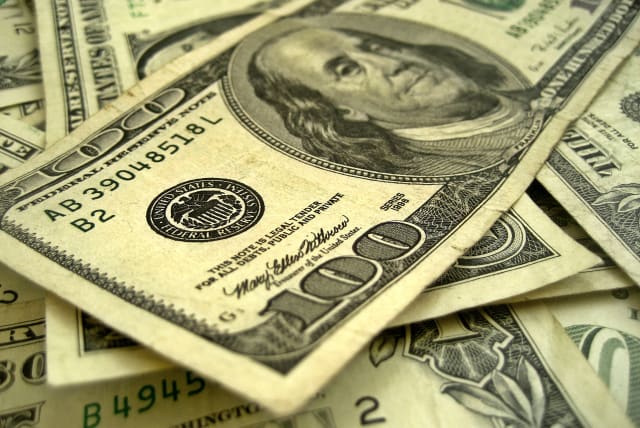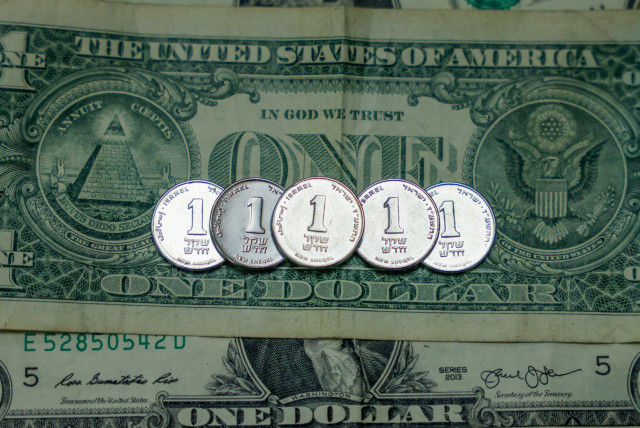Middle East explores alternatives to dollar dominance

Despite conducting fewer transactions in US dollars, the American currency still presides over the region’s international markets.
The Iraqi Interior Ministry announced on Sunday a ban on the use of the US dollar in personal and commercial transactions. The move, reported locally, is intended to bolster the Iraqi dinar, the country’s native currency. This action aligns with an emerging trend across various Middle Eastern countries seeking to diminish their dollar dependency.
Although it would be misleading to suggest that the Middle East is experiencing a process of de-dollarization, countries within the region are indeed investigating alternatives to lessen their reliance on the US dollar for various reasons.
Joe Hepworth, the Middle East director at economic development consultancy OCO Global, told The Media Line that in Iraq, this prohibition on dollar usage in transactions likely aims to prevent the nation’s currency from becoming secondary, as witnessed in Turkey.
However, Hepworth cautions that this approach could create issues in the long run. “The problem with this is that it distorts the economy and further undermines and sidelines the local currency, with shadow exchange rates becoming the norm and, effectively, a two-speed economy emerging,” he explained.
When discussing Iran, arguably the region’s country with the most transactions in currencies other than the dollar, Hepworth posits, “While on the surface this looks like a geopolitical move, it’s actually borne of necessity.” He explained further that all dollar transactions worldwide fall under the jurisdiction of US authorities. Given the heavy sanctions on Iran, the country has largely been barred from trading in dollars, prompting a search for alternatives.
Jack Kennedy, associate director and head of the MENA desk for country risk at S&P Global Market Intelligence suggests a gradual increase in cross-border trade settlements by Iran in local currencies, including the UAE dirham. He tells The Media Line that this “would potentially allow Iran to circumvent sanctions and US dollar clearinghouses, and to recuperate, through conversion from hard currencies, revenues/assets withheld in regional countries’ banks because of these sanctions.”
Gulf countries begin trading oil in currencies other than dollar
Gulf countries have also shown interest in trading their oil in currencies other than the dollar. Kennedy pointed out that in March 2023, the China National Offshore Oil Corporation and France’s Total Energies completed the first-ever trade of Emirati liquefied natural gas in Chinese yuan.
According to Kennedy, the Gulf’s motivation probably stems from the economic effects experienced by sanctioned countries. “It seems likely that Gulf hydrocarbon exporters have an interest in diversifying some of the currency payments with their trade partners, particularly after seeing the impact the financial sanctions have had on Russia and Iran,” he explained.
Kennedy added that India is also “keen to pursue at least some trade transactions with MENA countries in the Indian rupee—political intent for the move has increased given significant West-led sanctions on Russia following its invasion of Ukraine.”
However, Kennedy cautioned that this movement currently has limited scope. Although there is a political intent to gradually increase trade in non-dollar currencies in the region, “The US dollar will still dominate cross-border settlements and Gulf states are likely to continue pricing hydrocarbon exports in US dollars for as long as their currencies are pegged to it.”
Thus, Kennedy posits that these moves do not signal a de-dollarization process in the Middle East, but rather reflect the region’s exploration of alternatives to dollar dependence.
Hepworth concurs, emphasizing that the deep-rooted connection between the dollar and global oil prices implies that the Middle East’s de-dollarization “is both distant and unlikely for as long as Middle Eastern economies are fundamentally based on energy production and exports.”
Kennedy observes that this trend echoes broader macroeconomic patterns, such as rising interest rates, and the subsequent implications for import-dependent countries in the MENA region that are facing challenges in sourcing dollars.
Citing Egypt as an instance, Kennedy suggests that the country may be contemplating procuring critical commodities like wheat in currencies other than the dollar. “That was probably reflected in its decision to leave the Grain Trades Convention this summer,” he added.
Jerusalem Post Store
`; document.getElementById("linkPremium").innerHTML = cont; var divWithLink = document.getElementById("premium-link"); if (divWithLink !== null && divWithLink !== 'undefined') { divWithLink.style.border = "solid 1px #cb0f3e"; divWithLink.style.textAlign = "center"; divWithLink.style.marginBottom = "15px"; divWithLink.style.marginTop = "15px"; divWithLink.style.width = "100%"; divWithLink.style.backgroundColor = "#122952"; divWithLink.style.color = "#ffffff"; divWithLink.style.lineHeight = "1.5"; } } (function (v, i) { });


